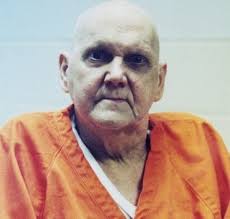Chess in Bedlam
In 1883-1884, patients considered insane at Bethlehem Hospital (known as the Bedlam Lunatic Asylum) supposedly defeated the Cambridge University Chess Club in a postal game.
The Cambridge University - Bedlam chess game first appeared in Leopold Hoffer's (1842-1913) chess column in THE FIELD on May 10, 1884. The game is given with Hoffer's notes. He wrote:
"The subjoined game was played between the Cambridge University
Chess Club and some gentlemen, patients in Bethlehem Hospital.
It commenced early in December, 1883, and was finished at the
end of March (1884)." Some sources say March 1885, but it was 1884.
In 1955 T. W. Sweby of Luton, England published a short article in the British magazine CHESS (page 6, Oct 15, 1955) entitled, 'That "Bedlam beat Cambridge" story. He suggested that this game did not occur between Bedlam and Cambridge University.
Chernev responded to this article by quoting his source of the game. Chernev said it appeared in the October 1937 issue of CHESS REVIEW on page 222.
In the March, 1984 edition of CHESS (page 268, vol 48), T. W. Sweby of Luton, England says that after 2 years of research, the game between Cambridge and Bedlam proved to be fallacious.
The game appeared in THE FIRESIDE BOOK OF CHESS by Chernev and Reinfeld in 1949 (page 76, item 24). It was also appeared in WONDERS AND CURIOSITIES OF CHESS by Irving Chernev, published in 1974. The game in on page 46, item 94.
Chernev and Reinfeld say it is a correspondence game played from 1883 to 1885.
The game goes:
Cambridge University - Bedlam, Postal 1883-84
1.e4 c5 2.Nc3 e6 3.Nf3 Nc6 4.d4 cxd4 5.Nxd4 Bb4 6.Nb5 Nf6 7.a3 Bxc3+ 8.Nxc3 d5 9.exd5 exd5 10.Bg5 (more common is 10.Bd3 or 10.Bf4. 10.Bg5 was first played by C. Schmid against Henry Blackburne in Berlin, 1881) 10…Be6 (more common is 10...O-O, first played by Richter against Tarrasch in Halle, 1883) 11.Be2 O-O 12.O-O Ne7?! (12...h6 or 12...Qd7) 13.Bxf6 gxf6 14.Bd3 Kh8 15.Qh5 f5 16.Ne2 Qd6 17.Nd4 Qe5 18.Nf3 (18.c3 is good) Qg7 19.Nh4 (19.g3 or 19.Qh4) Rg8 20.g3 (20.Rab1) Qf6 (20...Qxb2 should be OK) 21.f4 Rg4 22.Rae1 (22.Nf3 was stronger and White may be winning) Rag8 23.Ng2 (or 23.Kh1) R8g6 24.Rxe6? (now that
is a crazy move. 24.Be2 was fine) fxe6 25.Be2 (25.c3 was better) Rh6 and White resigns (prematurely) 0-1
White could still play 26.Qe8+ Rg8 27.Qd7 Qd4+ 28.Rf2 Nc8 29.c3 Qb6 30.Qb5 Qxb5 31.Bxb5 Nd6 32.Bd3 and Black still has a lot of work to do to win the endgame.
Hoffer explained White's early resignation as follows:
"We suppose the brunt of the battle fell to the lot of the
two gentlemen you mention, and the task was too much for them
during the University week. (THE FIELD, March 29, 1884)
Who was the Cambridge University team? In 1884, when Cambridge University played Oxford University, the team composed of Frank Morley, G. Kuchler, E. Raymond, W. Buncombe, Hugh Sherrard, J. Gibson, and H. Gwinner.
The Bedlam (Bethlehem) players were unknown, but one had a nickname called Beta.
"Bedlam" or Bethlehem Hospital, was originally located in the
Priory of St. Mary of Bethlehem, founded in 1274 at Bishopsgate, London.
When Henry VIII dissolved the monasteries, he gave the land on which the asylum stood to the city of London, to be used as a madhouse. In 1647 a new hospital
was built at London wall and Moorgate. The building was officially known as Bethlehem Royal Hospital.
In 1815 the old hospital was declared unsafe and a new hospital was erected south of the River Thames near Lambeth Road.
Bethlehem Hospital was the world's first mental institution. Londoners did not want to utter a holy word like Bethlehem, so they called it Bethlem, then Bedlam. It remained an asylum until 1930.
In 1936 the building became the Imperial War Museum.




Comments
Post a Comment